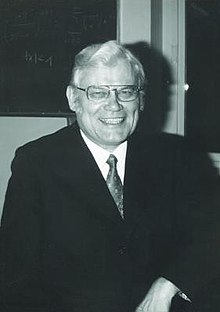Emanuel Sperner | |
|---|---|
 | |
| Born | 9 December 1905 |
| Died | 17 March 1980 (aged 74) |
| Nationality | German |
| Alma mater | University of Hamburg |
| Known for | Sperner's theorem Sperner's lemma |
| Scientific career | |
| Fields | Mathematics |
| Institutions | University of Königsberg University of Bonn University of Freiburg University of Hamburg |
| Doctoral advisor | Wilhelm Blaschke |
| Doctoral students | Kurt Leichtweiss Gerhard Ringel |
Emanuel Sperner (9 December 1905 – 31 January 1980) was a German mathematician, best known for two theorems. He was born in Waltdorf (near Neiße, Upper Silesia, now Nysa, Poland), and died in Sulzburg-Laufen, West Germany. He was a student at Carolinum in Nysa and then Hamburg University where his advisor was Wilhelm Blaschke. He was appointed Professor in Königsberg in 1934, and subsequently held posts in a number of universities until 1974.
Sperner's theorem, from 1928, says that the size of an antichain in the power set of an n-set (a Sperner family) is at most the middle binomial coefficient(s).[1] It has several proofs and numerous generalizations, including the Sperner property of a partially ordered set.
Sperner's lemma, from 1928, states that every Sperner coloring of a triangulation of an n-dimensional simplex contains a cell colored with a complete set of colors.[2] It was proven by Sperner to provide an alternate proof of a theorem of Lebesgue characterizing dimensionality of Euclidean spaces. It was later noticed that this lemma provides a direct proof of the Brouwer fixed-point theorem without explicit use of homology.[3]
Sperner's students included Kurt Leichtweiss and Gerhard Ringel.
- ^ Ein Satz über Untermengen einer endlichen Menge. Math. Z. 27 (1928) 544–548.
- ^ Neuer Beweis für die Invarianz der Dimensionszahl und des Gebietes. Abh. Math. Sem. Hamburg VI (1928) 265–272.
- ^ Park, Sehie (1999). "Ninety Years of the Brouwer Fixed Point Theorem" (PDF). Vietnam Journal of Mathematics. 27 (3): 187–222. CiteSeerX 10.1.1.473.5513. Retrieved 2018-11-05.